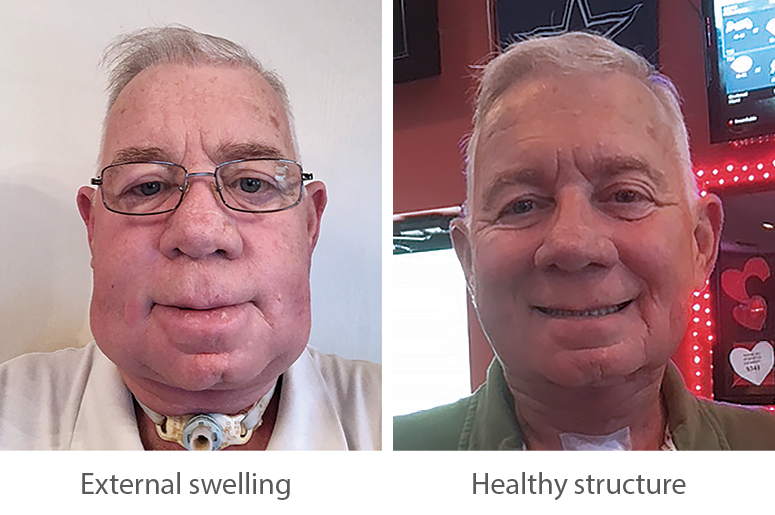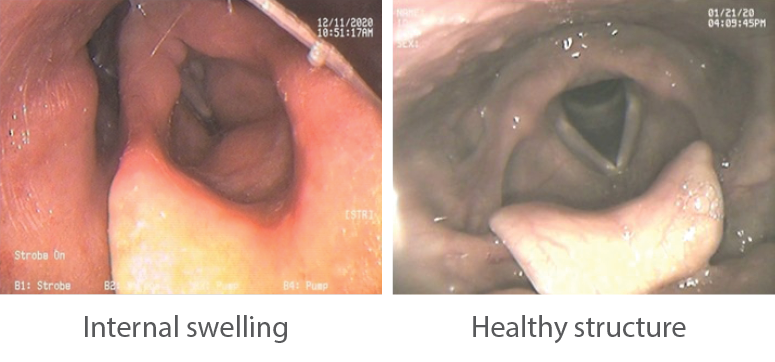Breast cancer-related lymphedema video resources
Whether you're newly diagnosed or navigating life with breast cancer-related lymphedema, you're not alone.
Read More
Surviving head and neck cancer is a testament to resilience and strength. However, for many survivors, the journey doesn’t end after treatment. The side effects of therapies like surgery, radiation, and chemotherapy can significantly impact quality of life. One of the most common and often under-discussed side effects is lymphedema. Understanding and managing these challenges can empower survivors to reclaim their lives.
The treatments for head and neck cancer are highly effective but can leave lasting effects. Common side effects include:
Lymphedema occurs when the lymphatic system is damaged or blocked, often due to surgery or radiation. In head and neck cancer survivors, this swelling can appear within the internal structures of the throat, around the neck, under the chin, and in the face. Left untreated, lymphedema can lead to:
Lymphedema affects a significant portion of head and neck cancer survivors. Studies estimate that upwards of 90% of survivors experience some form of lymphedema, whether externally visible or internal1. Despite its prevalence, lymphedema often goes underdiagnosed and untreated, underscoring the need for increased awareness and proactive management.


Managing lymphedema effectively can improve both physical and emotional well-being. Key components of lymphedema care include:
Being evaluated by a speech and language pathologist, as well as a certified lymphedema therapist, is important for proper assessment and instruction for best management.
Among the tools available for lymphedema management, the Flexitouch Plus pneumatic compression device has emerged as a game changer. This advanced device delivers targeted, automated therapy to help reduce swelling and improve lymphatic flow2. Here are some of its benefits:
Lymphedema management should be part of a broader survivorship care plan that addresses physical, emotional, and social well-being. Survivors should:
While the road to recovery after head and neck cancer can be challenging, survivors have access to a growing range of resources and therapies to help them thrive. Addressing side effects like lymphedema with tools like the Flexitouch Plus pneumatic compression device can make a significant difference. By embracing comprehensive survivorship care, survivors can lead fulfilling, empowered lives beyond cancer.
References:
1. Ridner et al Lymphat Res Biol 2016. doi: 10.1089/lrb.2016.0001
2. Gutierrez et al Otolaryng Head Neck 2019. doi: 10.1177/0194599818823180
3. Gutiérrez et al Head Neck 2020. doi: 10.1002/hed.26110
Whether you're newly diagnosed or navigating life with breast cancer-related lymphedema, you're not alone.
Read More
Living with lymphedema while trying to manage your weight can feel overwhelming, but understanding the connection between lymphedema and weight loss can help you develop effective strategies for both conditions.
Read More
Stage three lymphedema is the most advanced stage of this chronic condition. In this stage, the affected body part might display one or more symptoms, such as significant swelling, alterations in the skin, or recurring episodes of infection. While this stage can be challenging to manage, understanding your condition and...
Read More
When the lymphatic system becomes compromised, fluid buildup can lead to stage 1 lymphedema, a condition marked by mild but noticeable swelling in affected areas. This initial stage is a crucial window for intervention, as proper treatment can prevent progression to more severe stages. Knowing the signs, causes, and treatment...
Read More
Call us at 1.800.575.1900